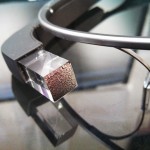 Cisco has released its annual projection of the growth of mobile broadband over the next five years, and once again it’s a doozy.
Cisco has released its annual projection of the growth of mobile broadband over the next five years, and once again it’s a doozy.
In 2018, it says, the world’s 10 billion mobile connections will go through 190 exabytes (which is also billion gigabytes) of data. That is an 11-fold growth rate from 2013, fed by a big build-out of advanced mobile networks, pervasive smartphones and an explosion of video.
Even more interesting, however, is a small part of the data that could signal an even bigger change in consumption, network deployments and businesses. Cisco doesn’t know how to quantify it yet, but wearable computers like Google Glass seem to be the biggest data pigs of all.
Two billion of the 10 billion mobile connections in 2018, Cisco said, will come from machine-to-machine communications. These include things like asset tracking devices, global positioning systems in cars and wearable computers like smart watches, personal health monitors and Glass.
“We projected 177 million wearables, up from 22 million in 2013,” said Thomas Barnett, who led the study. The actual success of Glass, he said, “is a wild card,” since the product isn’t yet broadly available.
There are reasons to think Glass and its ilk could sell in much bigger numbers. Glass works on a variation of the open-source Android operating system, which means any company can use it to develop a product. There are likely to be many variations, at a number of prices, within the next year or two.
If that happens, look out. In one experiment, Mr. Barnett said, they found that a person wearing Glass queried the Internet, took pictures and video, and sent enough messages to use about seven gigabytes a month, 25 percent more than the next largest consumer in 2018, the tablet.
If Glass-like products are popular, there is another way in which they will stress wireless networks, as well. “All wearables are a net new connection,” Mr. Barnett said, “not like smartphones replacing smartphones, or tablets replacing laptops and e-readers.”
Not only that, but Glass, along with Internet-connected heart monitors, smart cars and health monitors, “all need continuous, synchronized connections,” said Mr. Barnett. “It’s not just about the traffic. It’s about the intelligence of the network.”
Source: http://bits.blogs.nytimes.com
This post is also available in: Italian
